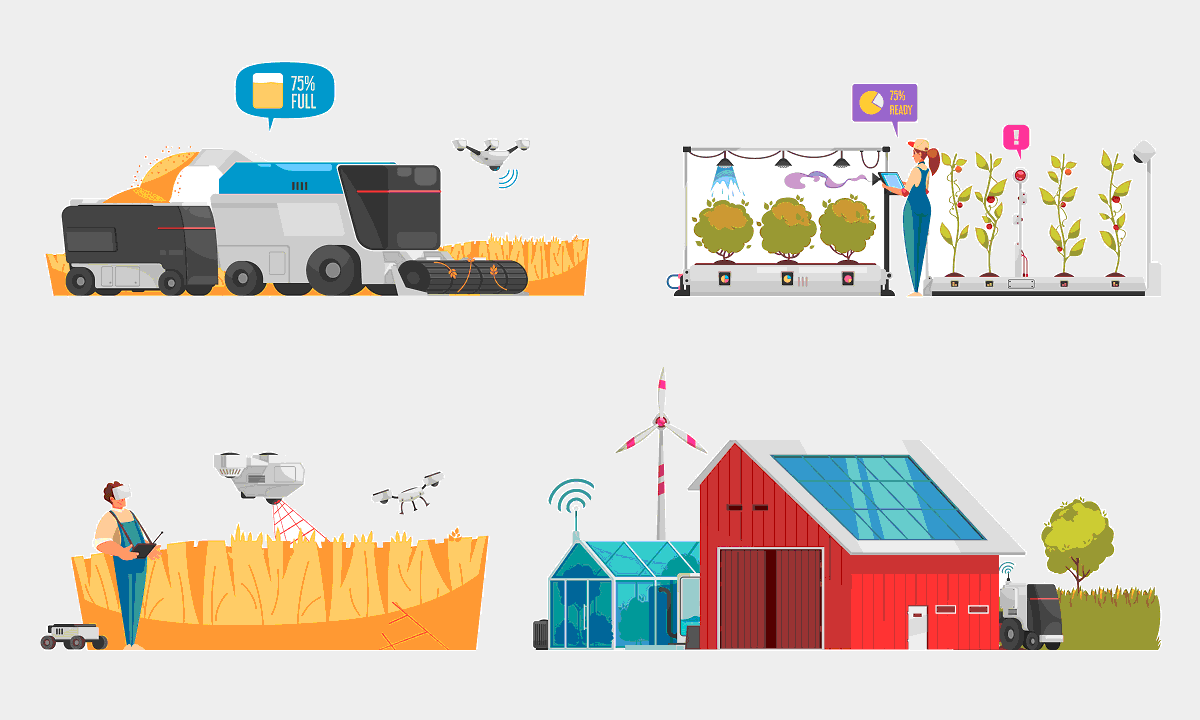
The agribusiness industry has undergone numerous changes in the last decade. With the rise of technology, agricultural robots have become a game-changer in the industry, offering numerous benefits such as increased efficiency, cost-effectiveness, and improved crop yield.
In this article, we will provide an in-depth understanding of the role of agricultural robots in the agribusiness industry and highlight the latest advancements in agricultural technology. We will also discuss the benefits of using agricultural robots in farming, the challenges faced in implementation, and successful case studies of agricultural robots in the agribusiness industry.
Introduction to Agricultural Robots
Agricultural robots, also known as agro robots, are automated machines designed to perform various tasks in the agriculture industry. The integration of technology in the farming industry has been a game-changer, providing farmers with new and innovative solutions to improve their operations. From precision agriculture robots for planting and harvesting, to autonomous tractors for plowing and planting, to drones for crop monitoring, agricultural robots have the potential to revolutionize the agribusiness industry.
The purpose of agricultural robots is to bring a new level of efficiency, precision, and cost-effectiveness to farming. By automating repetitive and labor-intensive tasks, agricultural robots are helping farmers increase their productivity, reduce labor costs, and improve crop yield. With the global agricultural robotics market size valued at $2.2 billion in 2020 and projected to reach $8.3 billion by 2026, it's clear that the use of agricultural robots is becoming increasingly popular in the agribusiness industry.
Benefits of Agricultural Robots for Farming
Increased Efficiency: Agricultural robots can perform various tasks with high accuracy and speed, reducing the time and effort required for manual labor. For example, drones can be used for crop monitoring, which eliminates the need for manual inspections and saves time.
Cost-effectiveness: Agricultural robots can reduce labor costs and increase efficiency, resulting in cost savings for the farmer. Autonomous tractors, for example, can plow and plant without the need for a human operator, reducing labor costs and increasing efficiency.
Improved Crop Yield: Agricultural robots can perform tasks with greater precision than manual labor, leading to improved crop yield. Precision agriculture robots can plant seeds with high accuracy, reducing wastage and increasing the overall yield.
Advancements in Agricultural Technology
The use of agricultural robots is not limited to crop monitoring and planting. Advancements in technology have led to the development of various innovative agricultural robots such as autonomous tractors, precision agriculture robots, and drones for crop monitoring.
Challenges and Solutions in the Implementation of Agricultural Robots
While agricultural robots offer numerous benefits, the implementation of these robots in the agribusiness industry is not without challenges. Some of the challenges faced include high costs, lack of infrastructure, and the need for specialized skills to operate and maintain these robots. However, there are solutions to overcome these challenges. For example, the development of cloud-based systems and mobile applications can make it easier for farmers to operate and maintain these robots. Additionally, partnerships between agricultural companies and technology companies can lead to the development of more affordable and accessible agricultural robots.
Successful Case Studies of Agricultural Robots in the Agribusiness Industry
Successful implementation of agricultural robots in a large-scale farm has led to improved crop yield and reduced labor costs. For example, the use of drones for crop monitoring has allowed farmers to identify and address issues in real-time, leading to improved crop health and yield. Precision agriculture robots have also proven to be successful in increasing the overall yield by planting seeds with high accuracy and reducing wastage.
A number of successful case studies have emerged in the agribusiness industry demonstrating the positive impact of agricultural robots on crop yield and cost-effectiveness.
- Precision Agriculture in Australia: An Australian farm that implemented precision agriculture robots saw an improvement in crop yield by 20%. The use of these robots allowed for precise monitoring of the crops and timely application of fertilizers, leading to increased growth and higher quality crops.
- Autonomous Tractors in the US: A large-scale farm in the US successfully implemented the use of autonomous tractors for plowing and planting. This resulted in a significant reduction in labor costs, as well as improved efficiency in the farming process.
- Drones for Crop Monitoring in South Africa: A South African farm utilized drones for crop monitoring, allowing for real-time analysis of crop growth and health. This helped in timely detection of any potential issues and allowed for prompt resolution, resulting in an increase in crop yield by 15%.
- Harvesting Robots in Spain: A Spanish farm implemented harvesting robots, leading to an increase in efficiency and speed of the harvesting process. The use of these robots allowed for a reduction in labor costs and ensured the consistent quality of the harvested crops.
These case studies demonstrate the successful implementation of agricultural robots in the agribusiness industry and their positive impact on crop yield and cost-effectiveness. The use of agricultural robots is clearly a game-changer in the industry, bringing a new level of efficiency and precision to farming.
Conclusion
In conclusion, agricultural robots are the future of farming, bringing a new level of efficiency and precision to the industry. With advancements in technology and the development of innovative agricultural robots, the agribusiness industry is poised for growth. While there are challenges to be faced in the implementation of these robots, partnerships between agricultural companies and technology companies, as well as the development of cloud-based systems and mobile applications, can lead to more affordable and accessible agricultural robots for farmers.
"Agricultural robots are the future of farming, bringing a new level of efficiency and precision to the industry."
Agricultural Science




